In order for your face to look exactly the way you dream after peeling, you must strictly follow the recommendations of cosmetologists. Exfoliation is always associated with a violation of the integrity of the skin to one degree or another. The cosmetologist must talk about what measures to take after this corrective procedure. However, not every woman, due to various circumstances, follows them. In this case, complications and side effects may occur.
In the epidermis injured by chemical or mechanical means, recovery processes are launched. How to restore skin after peeling? This procedure should occur naturally. Regeneration processes are launched in damaged skin. The main task of a woman in this case is to wait patiently. A cosmetologist will prescribe a product for restoring the epidermis, use it. Which product to use directly depends on the type of facial peeling and the characteristics of the woman’s skin.
How does peeling affect facial skin?
There are many types of exfoliation, but the principle is the same - disruption of epithelial tissue and stimulation of regenerative processes in the epidermis and dermis. This is how the physiological process of rejuvenation occurs. Our body is designed in such a way that it perceives injury after chemical peeling as an impulse to start the regeneration process. As a result, active formation of collagen fibers and hyaluronic acid molecules occurs. The epidermis is freed from dead cells of epithelial tissue, acquiring youth and elasticity.
Every woman should have a clear idea of what happens in her facial skin after peeling. The renewed epithelium forms new cells and tissues, and therefore requires special care. Even minor exposure to external factors can be dangerous for unformed epidermis. Therefore, any exogenous influence should either be excluded or minimized. Even your usual walks in the fresh air and familiar facial care products can worsen the condition of your skin after facial peeling, causing side effects. Therefore, cosmetologists and women with extensive experience in exfoliation recommend scheduling it at the end of the work week. Over the weekend, the skin will recover and by the beginning of next week the first positive results of exfoliation will be visible. Taking precautions, you need to follow the recommendations of specialists and after peeling, apply a cream that promotes rapid healing of the epidermis.
Even if you have undergone superficial facial exfoliation, which is gentle, you need to be careful. Dry and sensitive skin after exfoliation is especially susceptible to various environmental factors. If the cosmetologist did not focus your attention on post-peeling care, you should follow the general recommendations. You can learn in detail about how to care for your facial skin after peeling from our article.
How to restore skin after peeling?
There are a number of recommendations on how to restore skin after peeling. Their spectrum depends directly on the type and depth of exfoliation performed. The individual characteristics of the patient are also taken into account: skin type, age, tendency to allergic reactions, presence of chronic diseases.
If we consider the types of complications and side effects after exfoliation, we can name the following phenomena:
- Peeling is a normal consequence of the procedure. The feeling of dryness and tightness on the 3rd day transforms into detachment of epidermal particles, which spontaneously disappears after a maximum of a week. Natural products based on shea butter, jojoba, grape seed and with the addition of hyaluronic acid will help speed up the process;
- Hyperemia or redness is characteristic of rehabilitation after deep or median exfoliation. This side effect will go away in 5-20 days. The main thing during this period is to maintain a gentle diet, moderate physical activity and avoid stress. It is recommended to include foods rich in omega-3 acids in your diet;
- Swelling after exfoliation occurs in those with thin skin. On the recommendation of a cosmetologist, you can use a special facial gel after peeling with antioxidants that eliminates swelling;
- Inflammatory elements can result from incorrect exfoliation or improper post-peeling care. There are a number of spot-on products with antiseptic ingredients that will help in this case;
- An allergy may occur if an allergy test was not performed before the exfoliation procedure. If this reaction occurs, an antihistamine should be used;
- Increased pigment formation can be caused by improper preparation for exfoliation or exposure of the skin to sunlight after the procedure. Whitening creams and a diet that excludes foods that increase pigmentation will help cope with freckles or brown spots.
Each type of exfoliation has its own rehabilitation period. How to restore the skin after each of them?
Superficial
As you know, skin care after superficial peeling is the least troublesome. In this case, only the upper part of the epidermis is exfoliated. Just a couple of days after peeling, a film of young epidermal cells is formed. They require gentle care. After a superficial chemical peel, you should not use scrubs or roll off flaky and reddened epithelium for at least a week. Typically, a cosmetologist recommends using a cream that accelerates wound healing. After superficial peeling, skin care with panthenol-based ointments and creams is appropriate. This substance activates regeneration and prevents scar formation. It would be a good idea to drink an extra liter of water, which speeds up metabolic processes in the body.
Skin care after peeling with fruit acids and other types of gentle exfoliation involves the use of products that are gentle and contain a high sun protection factor. Apply them every time you go outside. When caring for your skin after peeling with acidic compounds, do not use alkaline, aggressive hygiene products that cause irritation to the epidermis.
Middle
Median exfoliation is a more serious effect on the skin with coral, trichloroacetic acids or a multi-acid composition. Therefore, after a mid-type chemical peel, a longer rehabilitation period follows. In this case, a woman may experience redness and peeling of the skin.
Many women are interested in the question: is it possible to cleanse the skin after peeling? The answer is clear: no! Do not use scrubs, roll or peel off scales with your hands. This leads to the formation of scars, which will be very difficult to remove! It is enough to wait a few days after the mid-peel without special care, and the peeling will go away on its own.
Skin care after chemical exposure should be very delicate. It is necessary to avoid both mechanical and chemical effects on the injured epidermis. As a facial cleanser, 3 days after peeling, you can wipe only with micellar water or another mild product without sulfates in the composition. You should also not use cosmetics, as you will need to remove makeup. Subsequent skin care after medium peeling is limited to the use of wound healing agents and the use of sunscreens.
Glubokoye
Deep exfoliation is a serious cosmetic and medical procedure and is performed under anesthesia. Phenolic, brown facial peeling, as well as laser resurfacing are effective methods for eliminating significant defects in the epidermis. But it should be understood that these types of exposure are highly traumatic.
Aftercare for this type of chemical peel can be done in a hospital setting, as the patient receives a controlled burn to the deep layers of the skin. Rehabilitation requires sterility and the use of medications: anabolic steroids, antibiotics and other drugs. This helps to cope with pain and prevents infection of the damaged dermis.
Care after the deep peeling procedure is special. For the first few days, you should not wash your face with water. After this, do not wipe your face with alcohol-based lotions. After deep peeling, part of skin care is the use of creams with a high UV protection factor. This mandatory requirement will help avoid the appearance of unwanted pigment spots.
Remember: washing your face during the rehabilitation process can be done with boiled warm water. The face should not be wiped, but blotted with a towel. Skin care after deep peeling can be carried out with products in the form of gel or foam. They do not need to be rubbed into the skin; they are easily absorbed.
Skin care after laser peeling and other deep effects is prescribed by a cosmetologist individually. Remedies for restoring serious damage to the epidermis usually include antioxidant substances: ubiquinone, tocopherol, selenium and other bioflavonoids.
Attention! The use of homemade masks during the rehabilitation stage must be agreed upon with a cosmetologist. Many components can trigger allergies, as skin sensitivity is increased.
General recommendations from cosmetologists
Typically, skin care after chemical peeling is discussed individually by a cosmetologist. It consists of many factors. The depth of exposure, the characteristics of the skin and the health of the patient are taken into account. However, there are general recommendations after facial peeling that can be called universal.
During the day after exfoliation, you cannot:
- Wash your face with soap, foam or gel;
- Touch, massage, rub, scratch the skin;
- Use moisturizing creams, nourishing serums, mattifying masks or lotions;
- Stay outside for a long time and come into contact with the sun's rays;
- Swim in the pool, take a steam bath, engage in active sports;
- Visit the solarium.
The next three days after exfoliation it is recommended:
- Wash your face with water with a slightly acidic pH or using a hypoallergenic, lightweight cleanser;
- Apply cream after peeling for the face with a wound healing effect. They usually contain panthenol or lanolin;
- Limit going outside, especially in sunny weather;
- Use products with a UV filter (SPF index - at least 35);
- Protect the skin from negative external factors: frost, wind, dust, sun.
For two weeks after exfoliation, you should adhere to the following recommendations:
- Use medications and creams prescribed by a cosmetologist;
- Refrain from using decorative cosmetics that clog pores;
- Do not remove scales, crusts, or scabs with your hands;
- Do not use scrubs, even the most delicate ones;
- Do not sunbathe in a solarium or in the sun, use sunscreen;
- Do not experiment with new brands of care cosmetics;
- Do not visit public baths, swimming pools, or open water bodies.
You've probably heard a lot of advice from friends and acquaintances on how to care for your face after chemical peeling, but you should only follow the recommendations of experienced cosmetologists. They will protect you from negative consequences in the form of complications and side effects.
How to deal with complications?
Unfortunately, exfoliation can bring not only smooth, glowing skin, but also scarring, acne, hyperpigmentation, and worsened cold sores.
Pigmentation is a rather unpleasant side effect of laser exfoliation and TCA. To prevent this, treat your face with kojic and retinoic acids before exfoliation. Some post-peeling treatments also remove subsequent pigmentation. This is the application of acetylcysteine and strong antioxidants (tocopherol, ascorbic acid, silene, etc.) to the epidermis.
Exacerbation of herpes may occur in those individuals who note this phenomenon at least twice a year. To prevent foci of herpes from spreading across the face after scrubbing or peeling the face, it is necessary to carry out appropriate therapy: take antiviral medications: oral medications and ointments.
If a woman is prone to acne, after exfoliation it may appear in an aggravated form. Agents with anti-inflammatory and sebostatic properties will be required. Antiseptic preparations with zinc can be applied pointwise to pimples and blackheads.
Severe peeling of the skin can also be observed after medium or deep exfoliation. There is no need to take any measures, the skin should exfoliate on its own. How to exfoliate skin faster after peeling? Cosmetologists strongly recommend: do not comb, do not pick off scales and do not use scrubs. All these manipulations can lead to scar formation.
How to prevent side effects?
In fact, if exfoliation was performed by a qualified cosmetologist taking into account the client’s characteristics, high-quality reagents were used, and aseptic conditions were observed, then there should be no adverse reactions, and negative consequences are excluded. But a lot depends on whether the woman follows all the recommendations she received from the specialist.
How to care for your facial skin after peeling at home?
The most important thing is to allow the epidermis to recover and not interfere with the natural regeneration process. After peeling, the skin of the face will begin to tighten, dryness will appear, and then peeling. These phenomena are natural and natural; there is no need to panic. Under no circumstances should you use a scrub after peeling your face. The injured epithelium will react to this action with scars and cicatrices, which are very difficult to remove.
The main thing in rehabilitation is gentle care. Can I wash my face after peeling? After deep and medium exposure, you should not wash your face with water on the first day. Over the next few days, you can only wash with boiled water. Then, for several weeks, it is recommended to use soft cleansers with a gentle hypoallergenic composition.
If a cosmetologist has prescribed medications (antibiotics, anabolic steroids, wound-healing ointments), they cannot be ignored. This can lead to irreparable consequences. The effect of exfoliation depends not only on the professionalism of the cosmetologist, but also on the responsibility of the woman herself.
What is not forbidden to do after peeling?
Repeatedly in this article it was stated what is prohibited to do after peeling. This means injuring the epidermis, staying in the sun and using any cosmetics.
Important! Despite the standard set of warnings from a cosmetologist, women are often concerned about the question: is it possible to wet their face after peeling? After deep and medium exfoliation, do not wet your face for 24 hours. Then you can wash only with boiled warm water.
A woman should understand that after a chemical peel, the quality of the result obtained largely depends on her actions. It is necessary to strictly follow the recommendations and exclude amateur activities. Only a professional can adequately assess the need or danger of even the safest procedure in your opinion. For example, after chemical exfoliation, you should not massage your face or even touch it. The sensitivity of the damaged epidermis is high, it can be easily harmed.
The cosmetologist recommends how to care for the skin after peeling so that the epidermis is restored without scars and blemishes immediately after the procedure. In addition to a number of standard manipulations, the beauty salon master will share with you special secrets of maintaining the peeling effect and prescribe a suitable line of products for post-peeling care. But keep in mind that you can use cleansers after facial peeling only after 3-4 days.
The rehabilitation period, depending on the depth of exfoliation, can last up to 3 weeks. In this case, you need to use cosmetics with extreme caution. The main thing is to avoid irritation, allergies, and clogged pores. When the epidermis is completely restored, you will again be able to use your favorite decorative cosmetics.
Summary
Proper care after peeling guarantees a woman a good result from the procedure and protects her from complications. Adverse reactions arise not only through the fault of the cosmetologist, but also from how the rehabilitation period goes. It is necessary to strictly follow all the recommendations of the salon master, use all prescribed products and medications and avoid amateur activities. Then exfoliation will be very effective, and the risks of complications will be reduced to zero. Skin glowing with beauty and youth will be a reward for your patience.
After facial cleansing, patients have the main question of what to apply to their face after peeling. The final effect of cleansing and the rate of restoration of the integument depend on the care provided. To ensure that after peeling there are no traces left except tightened and soft skin, it is important to follow the doctor’s recommendations, carefully observe changes and immediately respond to defects.
Possible consequences of peeling
Peeling is a useful procedure. It gets rid of excess “cargo” in the form of dead cells, particles of dirt, fat and sweat, eliminates wrinkles, age spots, scars from acne, chickenpox or measles. However, along with getting rid of problems, a number of unpleasant consequences of the procedure may appear. They are temporary and are considered normal after peeling:

- Peeling is a visible renewal of the skin. Old, keratinized layers give way to new fibers. During this period, intensive hydration is important. Shea butter and preparations with hyaluronic acid are excellent, which can be used 1-2 days after the peeling;
- Redness on the face is an adequate consequence of a skin burn. By exposing the epidermis to acids and a laser beam, you purposefully burn the tissue. The degree of redness and the duration of its passage depend on the strength and depth of exposure. According to statistics, redness lasts 5 days, but there have been cases when the effect lasted up to a month. To eliminate it, use vascular strengthening products containing Omega 3 acid.
- Puffiness is a popular problem for those with thin skin. Swelling is considered a completely acceptable phenomenon. In the normal course of rehabilitation, swelling will go away in a few days.
These symptoms after peeling are considered normal; you are required to strictly follow the cosmetologist’s recommendations. However, if there is the slightest complication, consult a doctor immediately.
Post-peeling care is an important step in the skin cleansing procedure. Be attentive to side effects, monitor changes in skin color, texture and your own well-being.
Basic products and post-peeling care
When the skin cleansing procedure is completed, the question arises: how to care for and what to apply to your face after peeling in order to reduce recovery time and prevent complications. It is difficult to answer the question unambiguously; it all depends on the type of peeling and the depth of exposure of the exfoliant.
Procedures after peeling with scrubs
Scrubs are considered the lightest cleansers. They contain abrasive particles, they act on the skin, exfoliate dead cells and dirt. Massage with abrasive particles of the product evens out the tone and texture of the skin, activates important processes (metabolism, renewal of the epidermis) and blood flow. Peeling with scrubs does not involve exposure to acid, so there are no burns or unpleasant side effects.
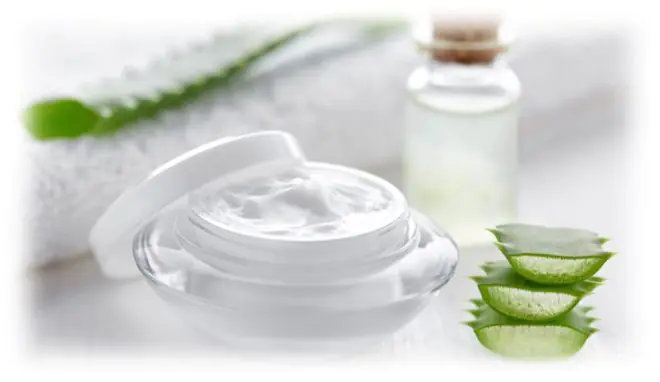
After scrubbing, the skin is slightly dry and a feeling of tightness may appear. The next day after the procedure, focus all your attention on moisturizing the skin. Use moisturizing tonics, wash your face with herbal decoctions and apply a cream with a moisturizing effect at least 2 times a day, massage with cosmetic plant oils.
After any peeling, decorative cosmetics cannot be used until the skin is completely restored. The exceptions are eyes and lips.
What to apply to your face after a superficial chemical peel
Do not rush to apply cosmetics to your skin after peeling. In the first day you don’t even need to touch it, so as not to cause an infection. On the second day, when your face is covered with a thick, shiny film, start washing with gel and foam. Make sure there are no scrubbing particles in them. It is recommended to use foams and gels rich in antioxidants.
Apply the medicinal product suggested by the cosmetologist to your face; it may contain panthenol and hyaluronic acid. They enhance the rate of recovery and perfectly moisturize the skin. Apply medicinal cosmetics 3-4 times a day. Facial massage is not required; it is better to use cosmetics in the form of a spray to minimize contact with burned skin. Repeat the procedures until the film is completely rejected.
After cleansing your face, it is important to protect your skin well from sun exposure. Ultraviolet rays negatively affect the condition of renewed skin and provoke hyperpigmentation. Do not forget to use sunscreens with a high degree of protection during the rehabilitation period.
Scrubs cannot be applied during the rehabilitation period after peeling. They will disrupt the newly formed layer of the epidermis, cause infection, provoke complications and prolong the recovery period.
What to do after a midline chemical peel
Medium peeling differs from superficial peeling by a higher concentration of the active chemical agent, deeper tissue damage and extensive burns. In the first days (from 2 to 4 days) you should not even wash your face with water. Partial moistening of the area around the eyes and lips is allowed.
If an unusual shine appears or a rough film appears on the surface of the face, start applying medications. Therapeutic cosmetics should contain antioxidants, panthenol, and hyaluronic acid. Apply the products 6 times a day, no massage required, touch the skin minimally.
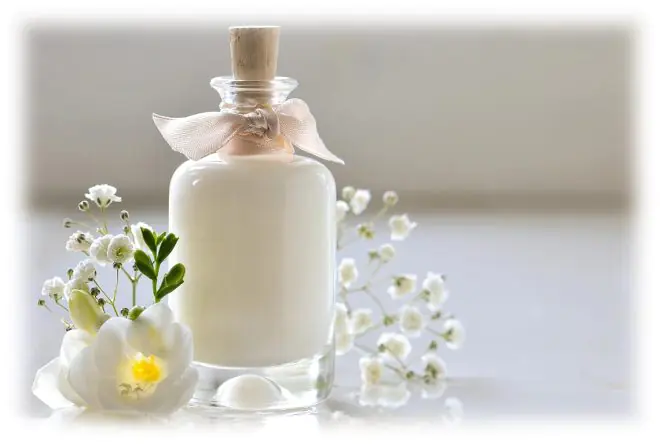
After the yellow peeling procedure, it is recommended to additionally include therapeutic masks with lactic acid and natural balms with regenerating properties that soothe the skin and protect against bacteria and infections. Shea butter, cranberry extract, panthenol will suit you.
Arm yourself with sunscreens with a high degree of protection (SPF 50+). They will have to be used within 2-3 months after facial peeling. After some peelings, additional antibiotics and painkillers will be required. Check with your cosmetologist about them.
Cosmetics after deep peeling
Deep peeling with acids is rarely used. Care after it is special; it involves several stages:
- On the first day after cleansing your face, washing your face and touching the skin with your hands is prohibited.
- Starting from the second day, lotions are made with a weak solution of acid, compresses, the skin is treated with a medicinal ointment with an anti-inflammatory, soothing effect or pure petroleum jelly. The cosmetologist may additionally prescribe a special product for application and treatment of the affected surface.
- On the third day, the face is treated with a special cream and bandages are applied, which will accelerate the exfoliation of old tissues and provide additional protection from the aggressive influence of the external environment. Continue the procedures for up to two weeks.
- The final stage will last until the tissue is completely restored and involves regular application of wound-healing ointments, products with hyaluronic acid and panthenol, and sunscreens with the highest protection factor.
After deep peeling, the rehabilitation process is painful, so it is necessary to take antibiotics, painkillers, and antiviral drugs.
Means to combat complications
If care is not taken properly after peeling, consequences that are unusual for cleansing may occur on the skin. You need to fight them at the first manifestations. The degree of unpleasant consequences and the duration of the recovery period depend on the speed of your reaction.
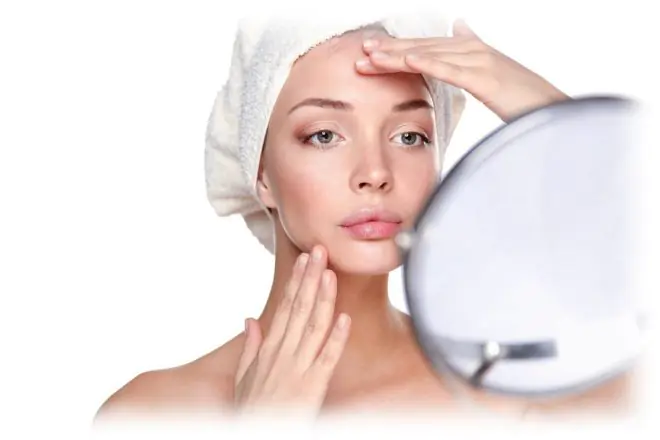
Let's consider the main complications after cleansing the skin:
- The appearance of acne is a problem often caused by inappropriate care after peeling. To eliminate the disease, it is recommended to consult a cosmetologist to prescribe a sebostatic, anti-inflammatory and antibacterial agent;
- An allergic reaction, itching, rashes - it is better to avoid allergies than to treat them later. After peeling, the skin becomes more sensitive to cosmetic products, so before using cream, foam, or gel, perform an allergy test. In response to allergies, antihistamine medications are prescribed to relieve symptoms;
- Hyperpigmentation – this also needs to be prevented. To do this, plan serious facial cleansing procedures for autumn and winter, protect your face from sun exposure as much as possible, and use special creams. Avoid cosmetics with extracts of lavender, lemon, bergamot, orange and cinnamon for a while. To eliminate already noticeable stains, the cosmetologist prescribes whitening creams;
- Hardening of the skin, the appearance of a crust - tearing it off is strictly prohibited. Be patient - it will go away on its own.
Remember, complications after peeling are a sign of improper, insufficient care. Do not hesitate, at the slightest suspicion of illness, contact a specialist to prescribe a remedy or drug.
Cosmetologists strongly recommend
For rehabilitation to be successful, do not neglect the advice of cosmetologists:
- Use the products and medications prescribed by your doctor. You cannot prescribe treatment for yourself. This can have a detrimental effect on the skin, leading to complications and new problems;
- Strictly follow the cosmetologist's instructions. If you have questions about prescribed cosmetics and medications, or your skin changes for the worse, contact him immediately;
- Do not peel off the film, do not touch your face with your hands - this will protect against infection, prevent residual scars, scars on the face;
- Renewed skin needs additional protection from sun rays. Regularly use sunscreens, lotions, sprays with the maximum SPF factor;
- Massage and masks should be postponed until the dead layer of cells is peeled off;
- During rehabilitation, you are required to have maximum participation, attention to the condition of the epidermis, and good care.
After peeling, do not rush to use folk remedies or self-medicate. This can negatively affect the skin and delay the process of its restoration and renewal. Be attentive to yourself, this is the only way you will achieve success and high results from the procedure!
As you know, every 28 days our epidermal cells die, forming a keratinized ball on the skin. In order for the dermis to receive enough oxygen, exfoliated scales must be regularly eliminated by cleansing the face. For these purposes, cosmetologists resort to such well-known procedures as scrubbing and peeling. But, without medical education, not all women understand the difference between the methods. Peeling and scrub - what's the difference, we'll figure it out further.
Peeling and its purpose
Exfoliation or peeling involves cleaning the epidermis of keratinized scales, and the pores of accumulated subcutaneous sebum and cosmetic residues. Fruit enzymes present in natural components perfectly dissolve the bonds between living and dead epidermal cells, which facilitates the rapid exfoliation of unnecessary particles. In addition, the effect of the active components of peeling compositions perfectly moisturizes the skin, nourishes it and ensures the production of collagen.
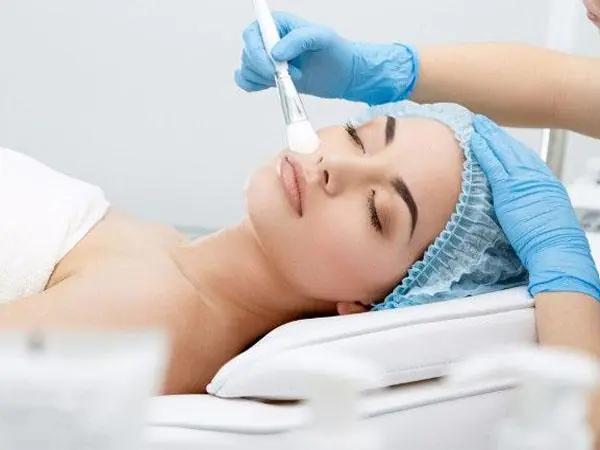
Peeling solves the following type of problems:
- cleaning pores and eliminating keratinized dermis;
- fight against acne, acne and rosacea;
- elimination of age spots, freckles and scars;
- hydration and nourishment;
- gives the skin a healthy, uniform color;
- elimination of fine wrinkles due to the production of collagen and elastane fibers;
- normalization of metabolism at the cellular level.
The result of peeling cleansing is noticeable after the first procedure. But for a long-lasting effect, cosmetologists recommend several sessions.
Types of peelings:
- Superficial. Acids with low concentrations are used. Very often, peeling products are made in the form of a cream that softens the effect of aggressive components due to oils, plant extracts, hyaluronic acid and vitamins introduced into the composition.
- Average. The acid concentration does not exceed 15%. If you follow the recommendations of cosmetologists, they can be carried out at home.
- Deep impact. These include Jessener peeling, retinoic, glycolic, lactic, trichloroacetic, salicylic and other options with a high degree of acid concentration. They are made exclusively in beauty salons and medical centers.
- Enzyme. The active components include enzymes, for example, lactobacilli cultures. They restore the skin by saturating it with protein.
Attention! At home, it is allowed to use surface-acting peeling agents. But highly concentrated acid-based preparations are used only in salons, because they cause skin burns and require compliance with all the subtleties of application technology.
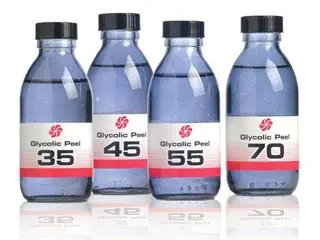
Glycolic acid is ideal for eliminating fine wrinkles and thickening of the skin. Peeling with lactic acid is indicated for those with dermis with age spots.
Mandelic acid is used for overly sensitive skin, and salicylic peeling, in particular Jessener's, will relieve the face of acne, acne and rosacea. Azelaic acid has proven itself excellent against rosacea, and retinoic acid in the fight against the first signs of aging.
When performing peeling with AHA acids, especially if the procedure is being done for the first time, It is recommended to gradually prepare the skin for the aggressive effects of reagents. To do this, use milk, cream or tonic, which contains the acid used during exfoliation.
Standard medium and deep peeling involves:
- Cleansing the dermis of cosmetics and sebum residues.
- Applying the product for a specific time. The patient may feel a slight tingling or even burning sensation, because a burn occurs, eliminating the stratum corneum of the epidermis.
- Neutralization of the drug with special means, plain water or soda solution.
- Distribution of restorative cream over the skin.
- Follow the basic recommendations of the cosmetologist: at first do not touch your face with your hands, do not apply decorative cosmetics and do not wash your face with water to avoid infection. The dermis must be protected from exposure to UV rays (which is why most peels are carried out in the autumn-winter period) and moisturized from time to time.
If you are doing superficial peeling, then you should not wait 7–14 days to restore the dermis. The next procedure can be carried out 3-4 days after the previous one.
Benefits of facial scrub
Scrubs have a mechanical effect on the skin, that is, due to small granules, they seem to scrape out dead skin scales, freeing the skin from them. Thanks to this effect on the dermis, the functioning of the sebaceous glands is normalized, and healthy cells receive normal access to oxygen. Scrubbing is also carried out to prevent the appearance of acne.
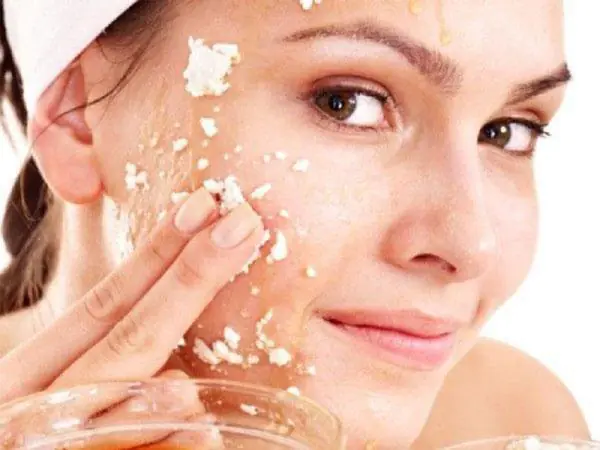
To more effectively influence the keratinized epidermis, beauty salons use special devices that promote better cleaning of pores.
Indications:
- age after 30 years;
- greasy shine;
- dry type of epidermis;
- preventive measure against the formation of acne and comedones;
- dull dermis color;
- sagging and loss of skin turgor, because a slight lifting effect is provided through massaging and reducing swelling.
It should be noted that cleaning with scrubs not only promotes normal access of oxygen, but also improves the penetration of the active components of cosmetics applied after the procedure.
Kinds:
- cream;
- helium with microparticles from polymer balls;
- dry in the form of coconut flakes or oil;
- enzymatic or enzymatic. They contain protein, so they not only cleanse, but also restore the epidermis.
There are also scrubs designed for different types of dermis - dry, oily, combination or normal.
You should know: You don't have to spend money on scrubs. You can use homemade scrub masks based on sugar, sea salt, crushed apricot kernels or coffee beans.
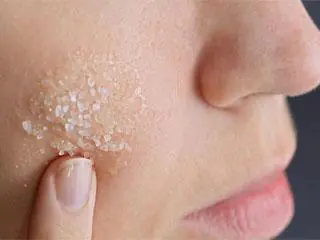
Stages of the procedure:
- Apply a little exfoliant to a face cleansed of cosmetics.
- Using light massage movements, distribute the suspension over the skin. The standard procedure time is 1–2 minutes. Do not overdo it, otherwise you may injure the dermis.
- The product is washed off with plenty of warm water.
- There is no rehabilitation period. The only thing cosmetologists recommend is to wash your face with herbal decoctions and apply moisturizers.
For deeper penetration of the product, you can steam your face over herbs or in the bath. Vaporizers or special gels are also suitable for these purposes.
Please note that Cleaning with scrubs requires observing intervals between procedures. Frequent scrubbing is prohibited. For normal skin, the procedure is carried out once a week, for oily skin - 2 times a week, and for dry skin - once every 14 days. If you neglect this rule, you risk worsening your skin condition. Redness and age spots may appear. Dryness is observed due to the elimination of the protective layer and accelerated formation of wrinkles.
Scrubs are not recommended when the patient has very sensitive skin and there are inflammatory processes on the face. The fact is that the abrasive components of the product can cause microtrauma, which leads to redness, the appearance of the vascular network, uneven color, or to the further spread of infection. If you still plan to cleanse in this way, then purchase products only based on sugar or sea salt.
What are the similarities and what are the differences?
What is the difference between peeling and scrub? This question interests many women who care for their faces.
The distinctive features of peeling and scrubbing procedures are the preparations applied to the skin, the technology used, the strength of action and varying degrees of effectiveness.
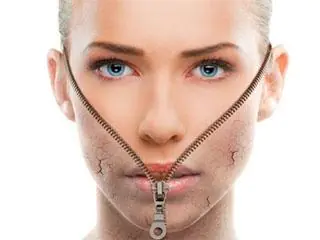
Differences:
- The scrub products contain large particles of grape or apricot seeds, sea salt, wax granules, and nut shells. Peeling preparations are fruit acids or viscous gels that contain small fractions.
- Peeling is a deeper cleansing of the face, but scrubs are superficial.
- Exfoliation is aimed not only at cleansing pores and eliminating exfoliated scales, but also at launching epidermal regeneration processes. For example, with chemical peels, a slight burn with acids occurs, after which the skin begins to actively recover, becomes renewed, uniform and more elastic.
- The scrub has a light massage effect, which cannot be said about exfoliation.
- There are different methods of applying the products: peeling is distributed evenly on the skin, but massage is performed using a scrub. It is forbidden to touch the sensitive dermis in the eye area.
- Peels are better at eliminating acne and rosacea, but, unfortunately, they cannot influence the cause of the formation of these dermatological diseases.
- After scrubbing, due to the weak aggressive effect, as occurs with exfoliation with acids, such side effects are not observed, such as swelling, redness, excessive peeling of the skin. The only thing you can feel is excessive tightness of the dermis. But this can be quickly resolved by moisturizing with creams, tonics, aloe or lemon juice masks, as well as washing the face with herbal decoctions.
Interesting to know: In cosmetology circles, peelings are preferred, because they solve a whole range of problems. A practicing dermatologist from the USA, Carey Benjamin, claims that scrubs contribute to the spread of infections, so they should not be used on inflamed skin. Peels in this regard are not so dangerous.
Peeling and scrubbing solve the same problem - to cleanse the epidermis of the stratum corneum, sebum and remnants of decorative cosmetics. Also, these procedures have one general contraindication: they cannot be done when the skin is excessively inflamed or there is herpes on the face. First, the dermatological problem is treated with medication and with the help of skin disinfection, and then they resort to beauty sessions.
What's better

It’s quite difficult to say which is better – peeling or scrub? After all, it is necessary to take into account various aspects of the procedures. In terms of effectiveness, of course, it is more advisable to use not superficial, but medium and deep peeling, carried out in salons.
If you contact a competent cosmetologist, he will help you choose a special product taking into account the problems of your dermis.
At home, you can alternate superficial peeling with a scrub, or try doing joint cleansing to improve the effect.
If you first cleanse the skin of keratinized scales, and then start cleaning again with peeling gel, you can achieve a double effect, because the exfoliation product can penetrate deeper into the epidermis, destroying the bonds between the remaining dead cells and living ones.
Execution Sequence
As you know, peeling with acids is quite traumatic, so during sessions you wait 14–21 days so that the skin can recover. If your dermis tolerates exfoliation well, can you try combining peeling with scrubbing? Of course, yes, but only when you do superficial exfoliation.
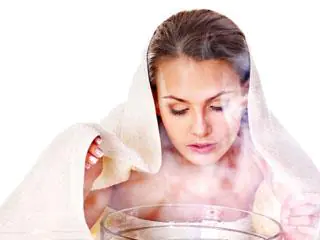
Stages of combined use:
- Steam your face, which will help open the pores.
- They start with a scrub. The face is washed with baby soap, and then a scrub is applied and a light massage is performed, avoiding the area around the eyes. After 2 minutes, wash off the product with warm water or wipe with a napkin.
- Gentle cosmetics are applied to the skin for superficial peeling (in no case with strong chemical peeling!). Wait a few minutes (the manufacturer always indicates the holding time on the packaging).
- If the scrub can be wiped off with a regular napkin, then the peeling suspension is washed off with plenty of water or soda solution.
Cosmetologist Rene Rouleau advises alternating both procedures, after consulting with a specialist. For example, on Wednesday and Saturday you can treat your skin with scrubbing in the shower, and on Monday treat it with a superficial peeling agent.
Important point: Scrubbing after deep chemical peeling is prohibited, because the skin has been burned. Your dermis should recover in 14–21 days. As soon as you see that the condition of the skin has returned to normal (at least a month after the session), you can start using scrubs at home.
Thus, what to choose: peeling or scrub is up to you. But If you really want to not only cleanse your pores, but also improve the condition of your dermis, make an appointment with a cosmetologist for chemical peeling. Although this procedure is not the cheapest, and has a number of contraindications, it not only removes dead skin cells, but also normalizes the functioning of the sebaceous glands, eliminates acne and minimizes wrinkles. If going to a specialist is alien to you, it is recommended to combine superficial peeling with scrubbing at home to enhance the cleansing effect.
Useful videos
How to choose peeling or scrub? How often should I use them?



